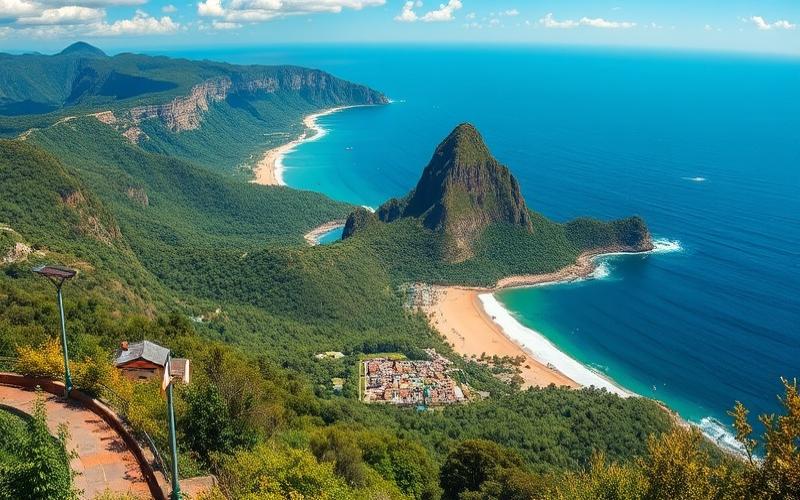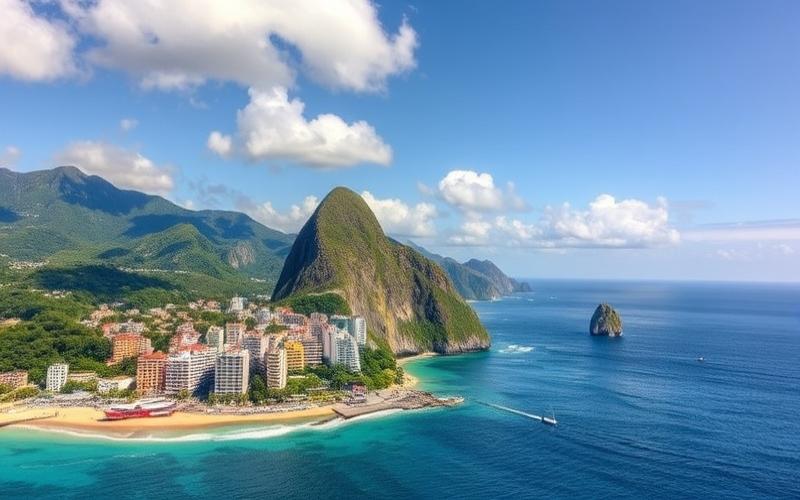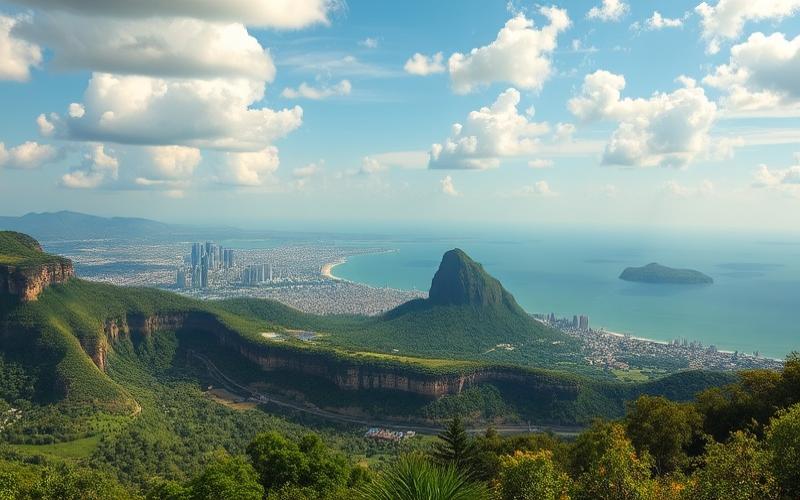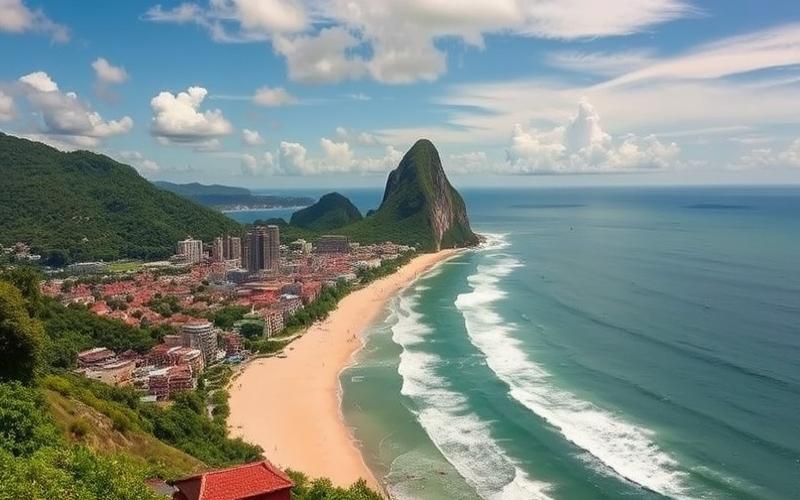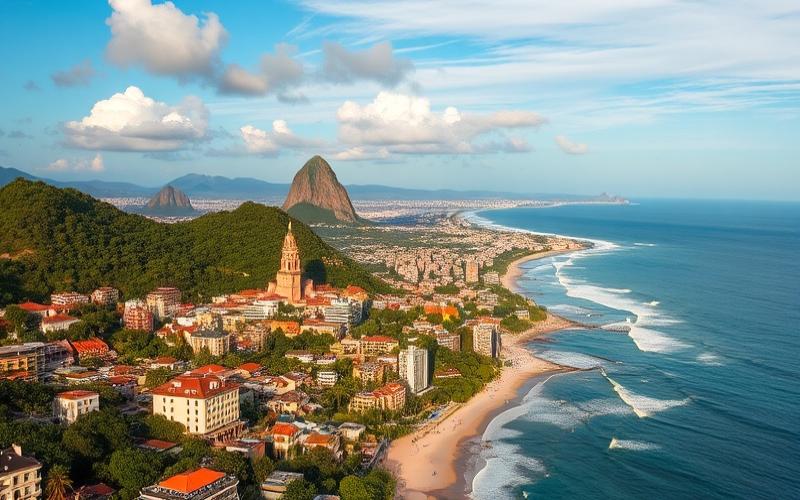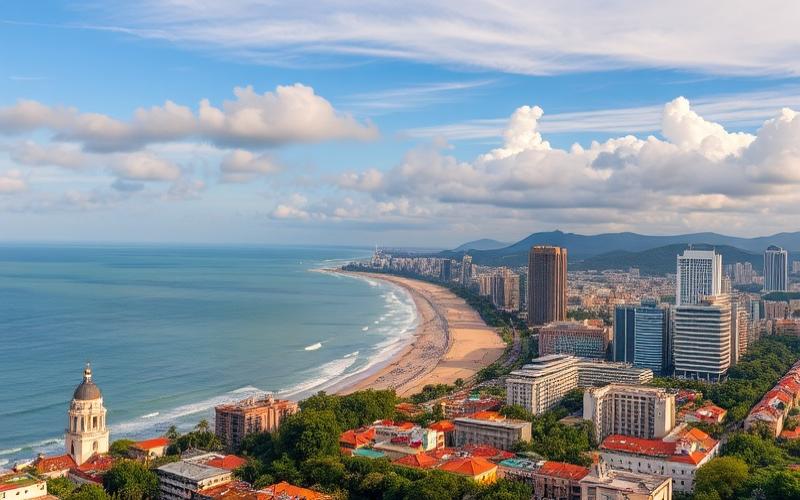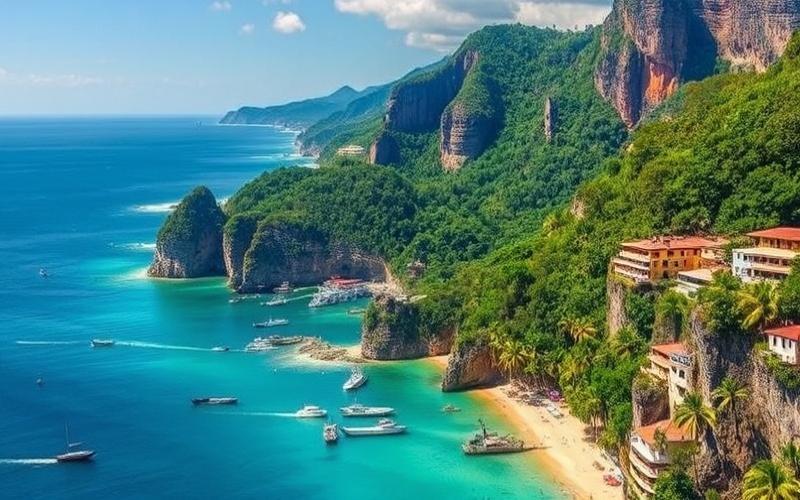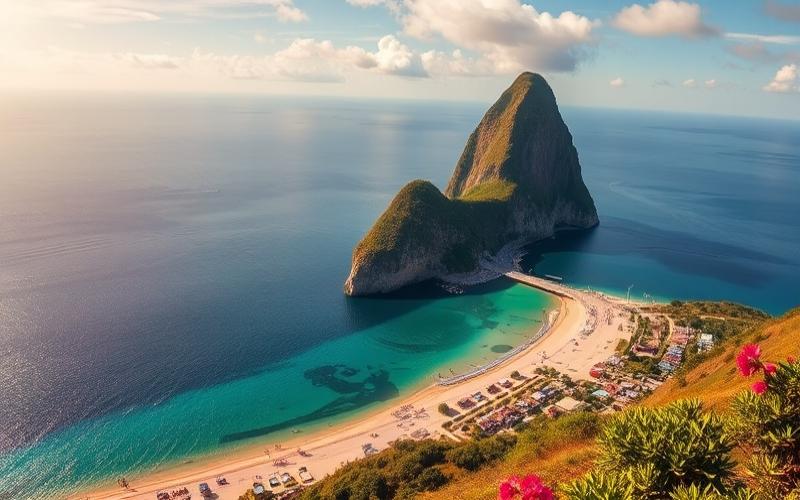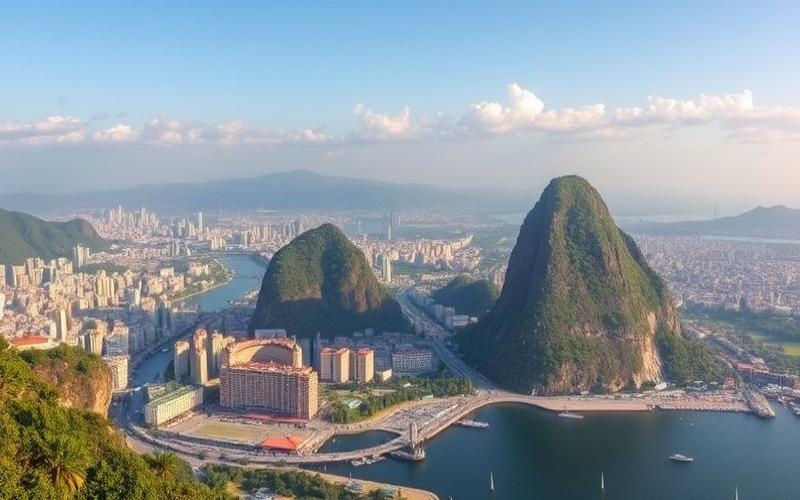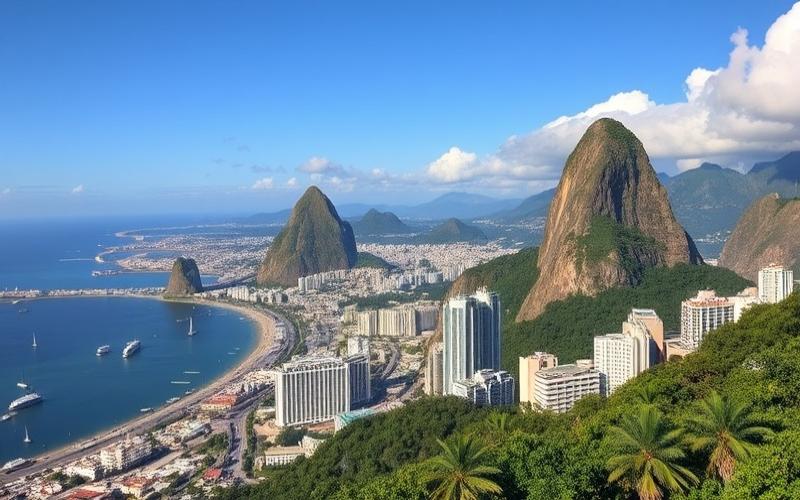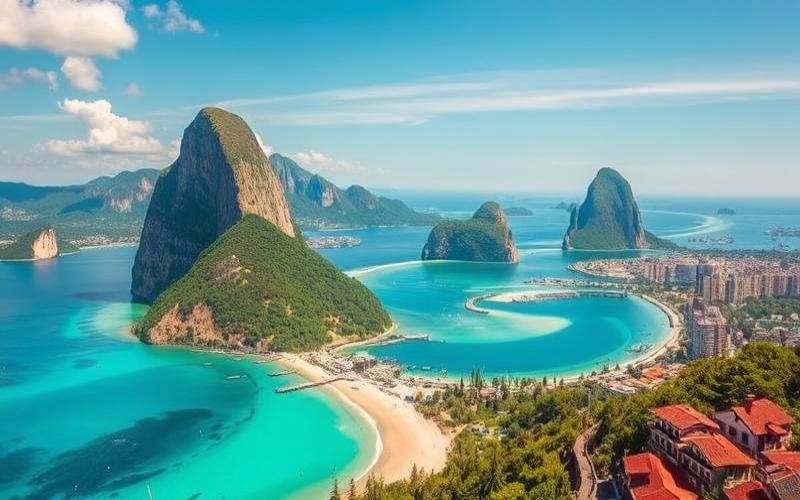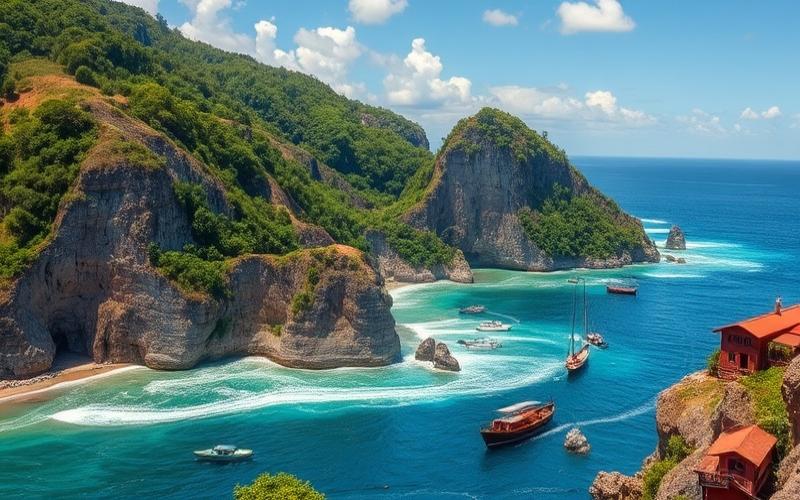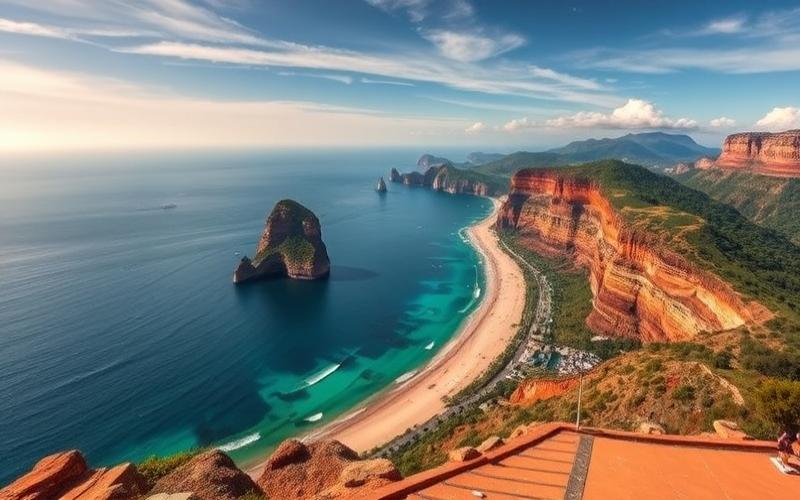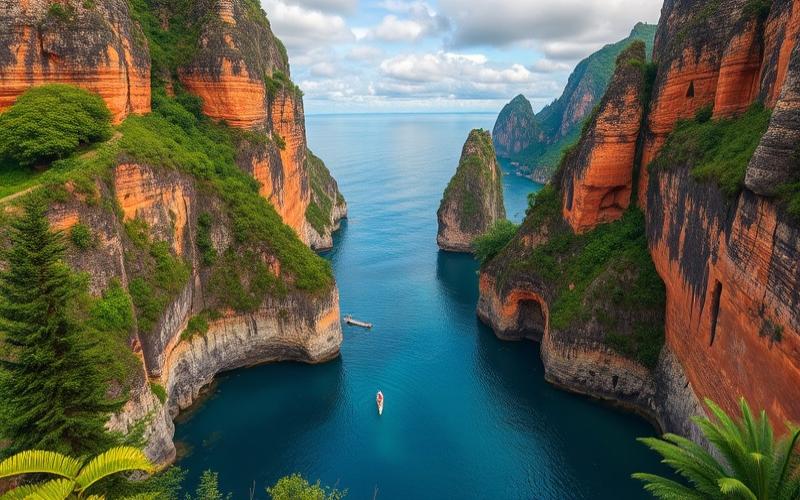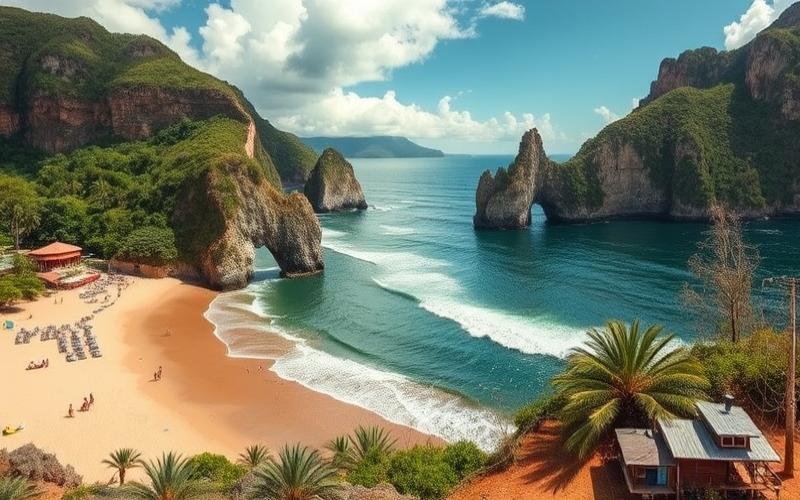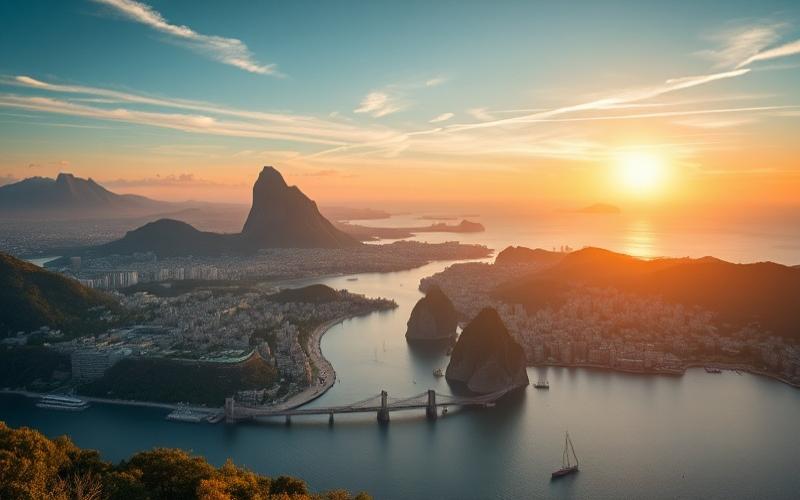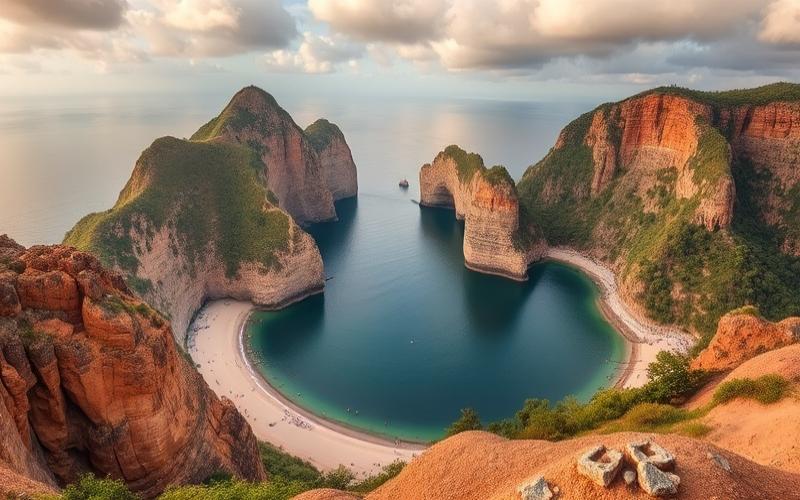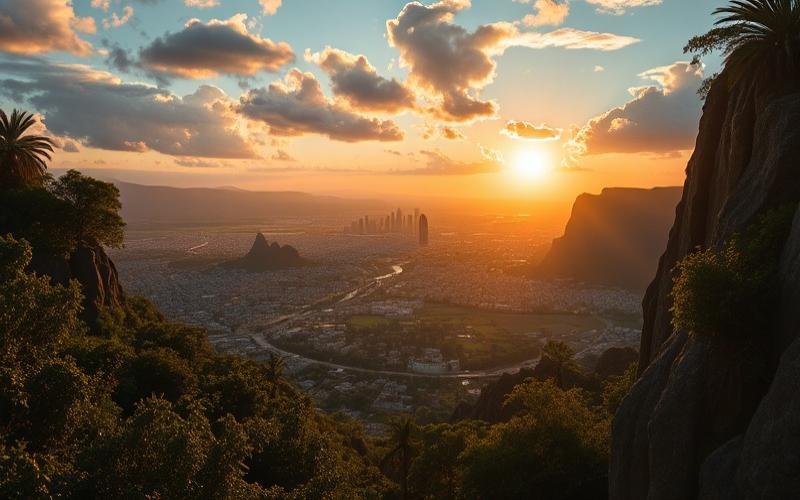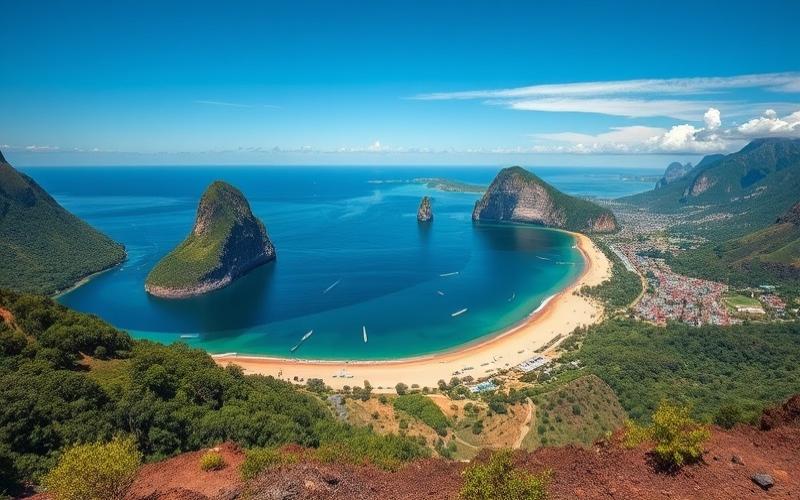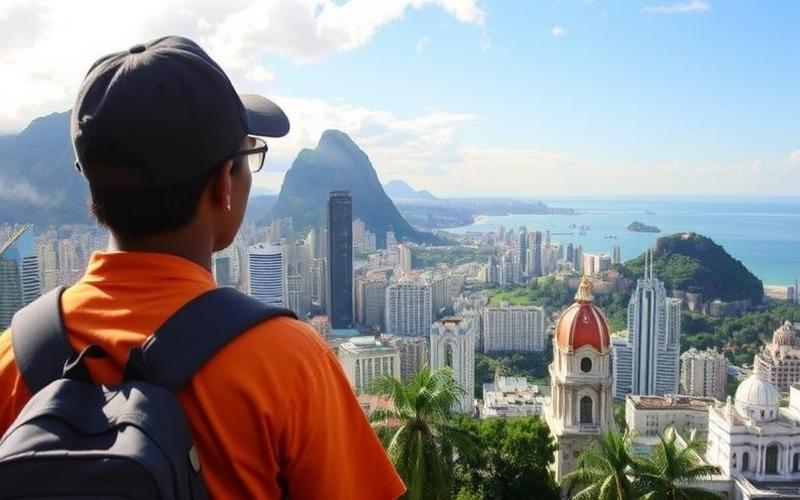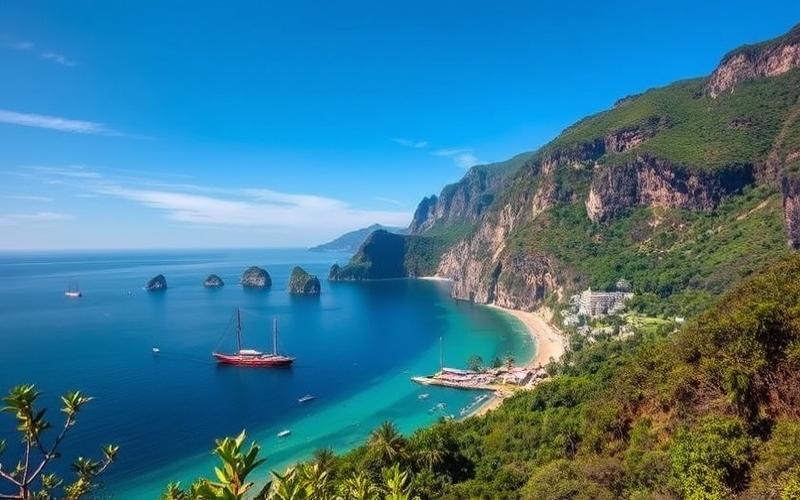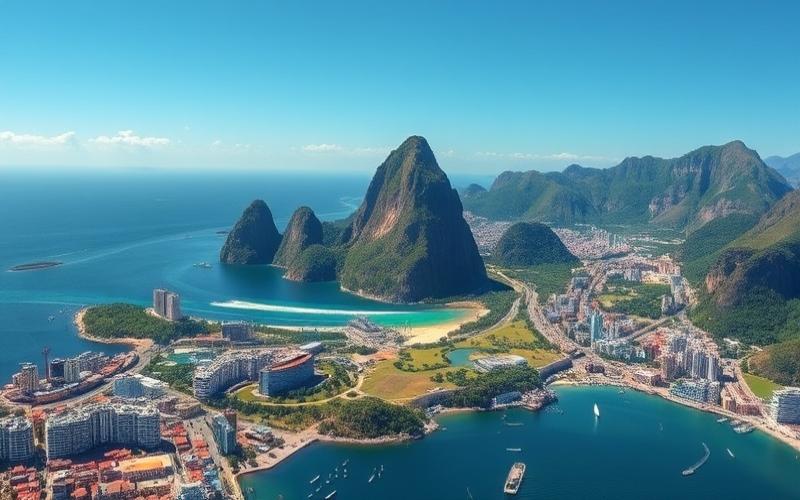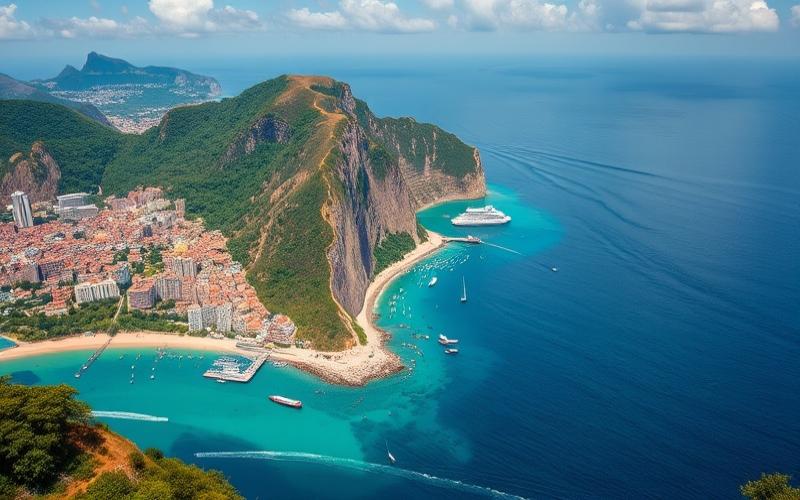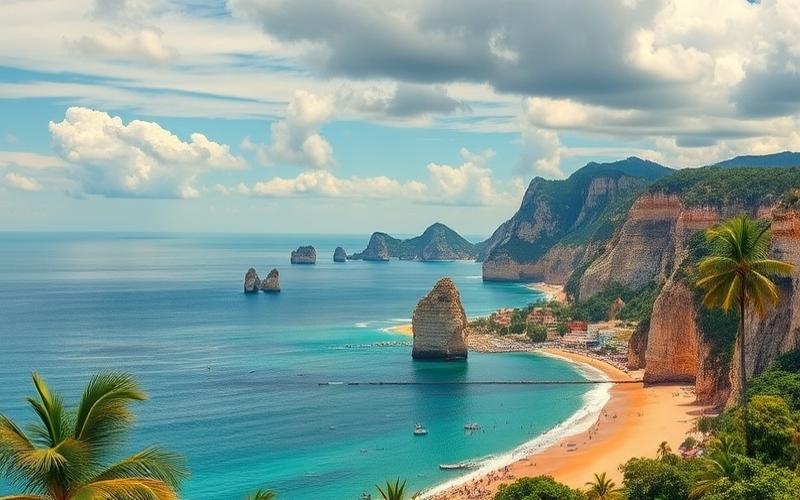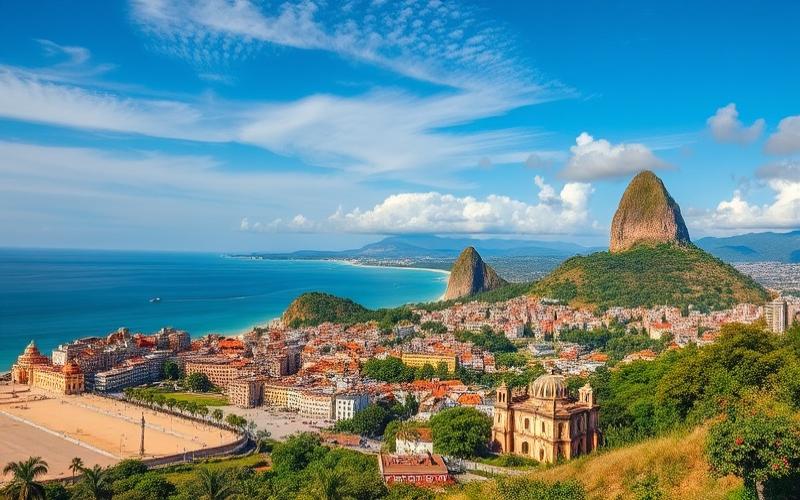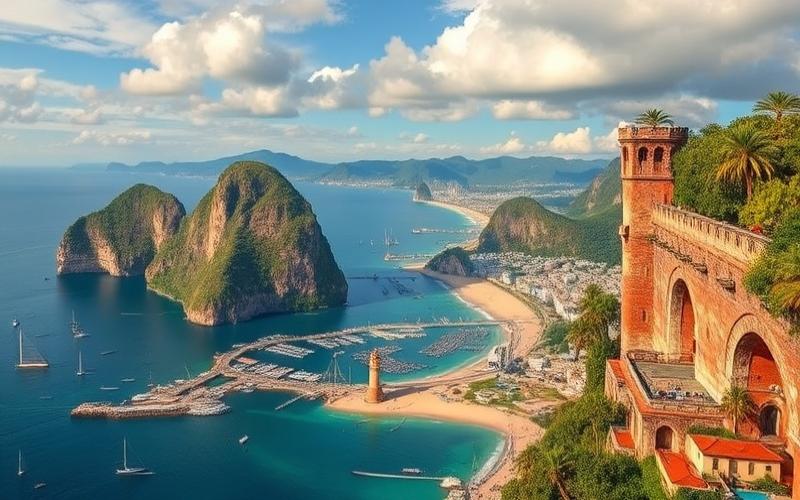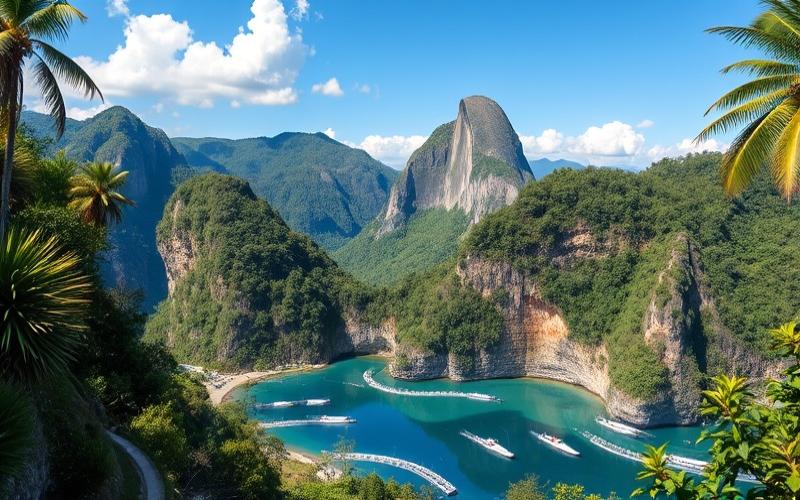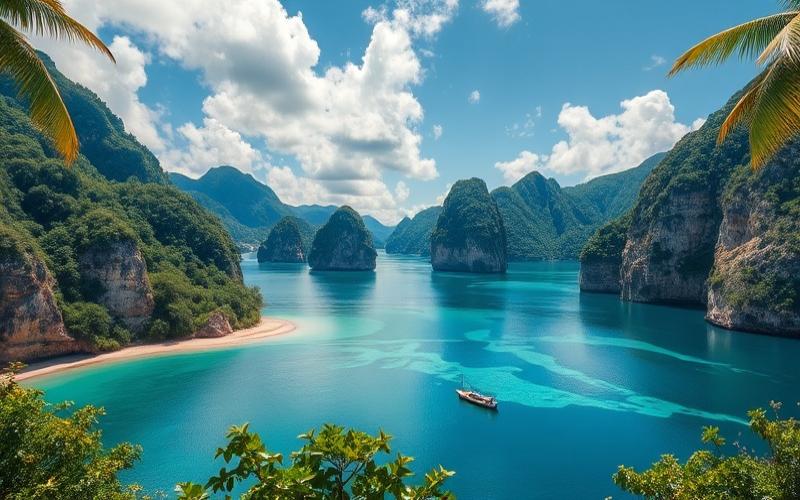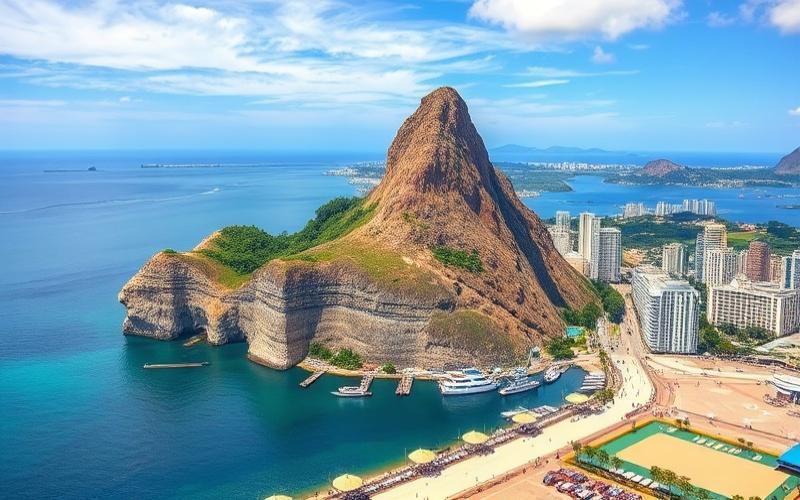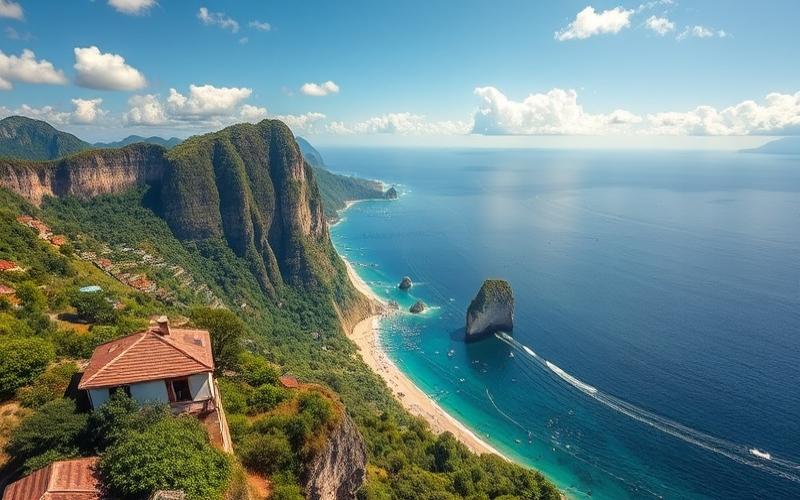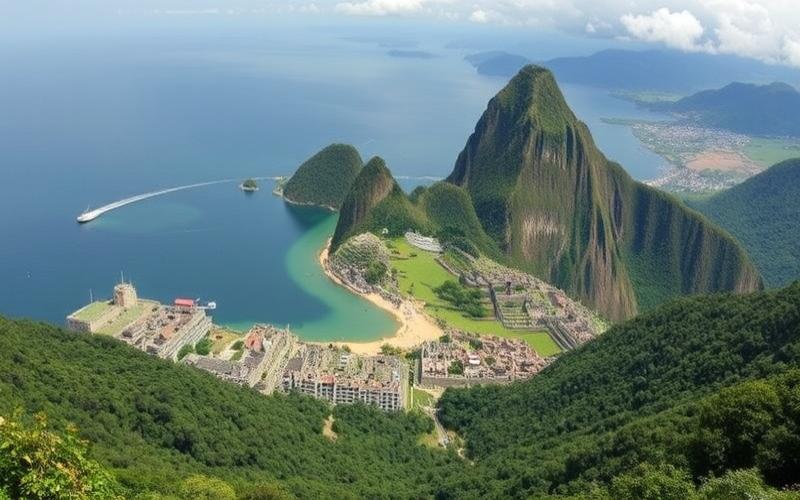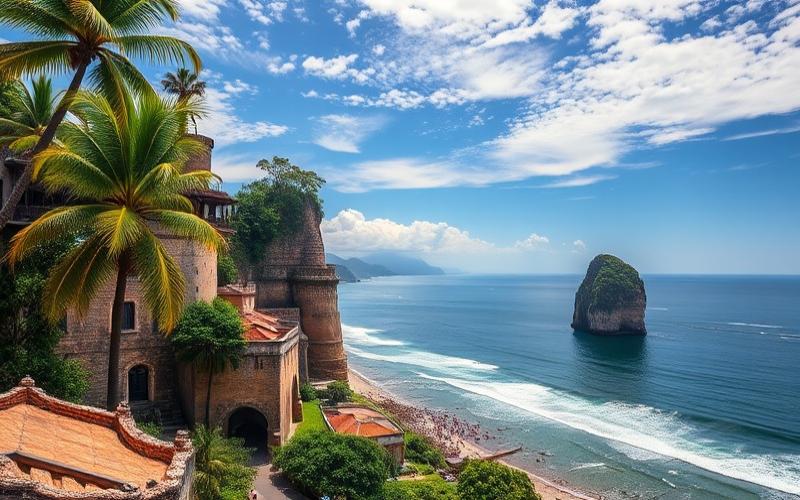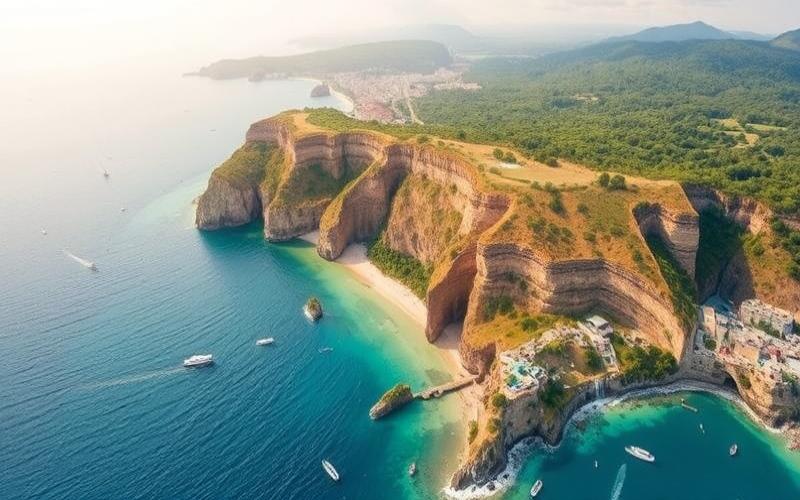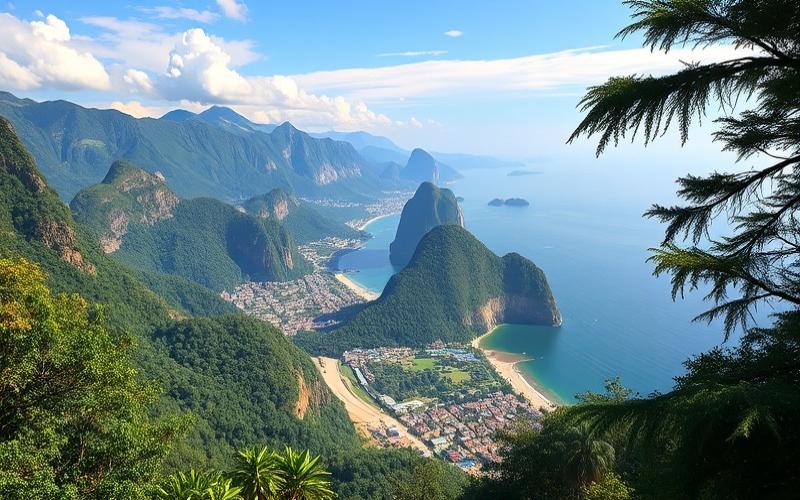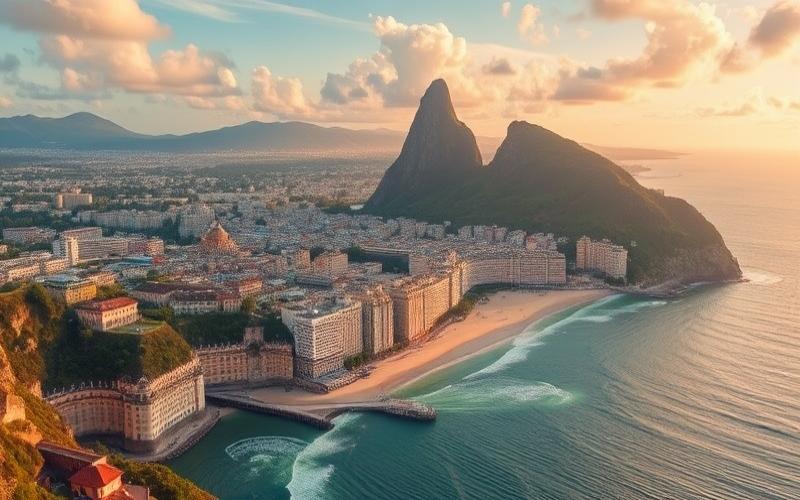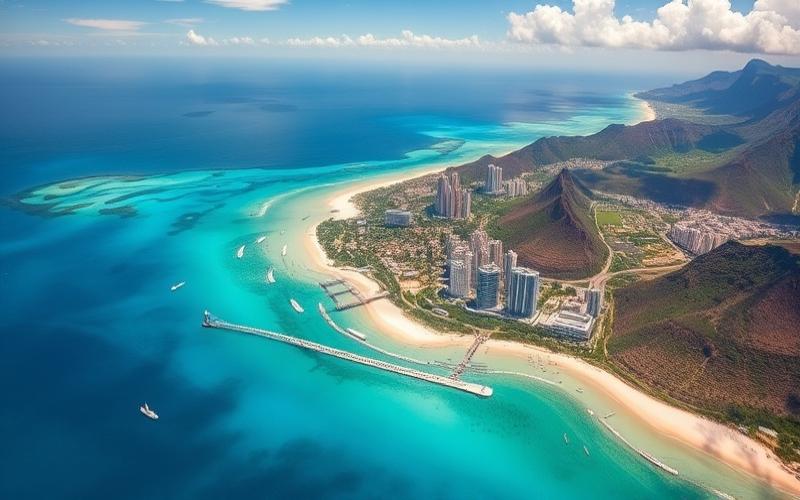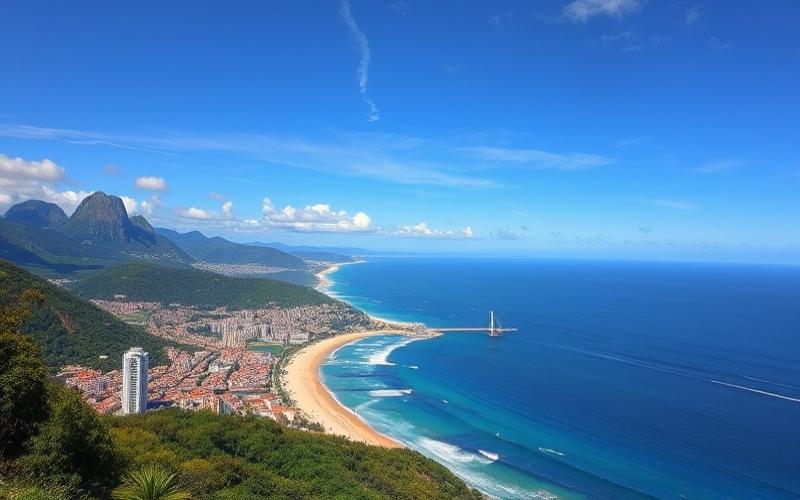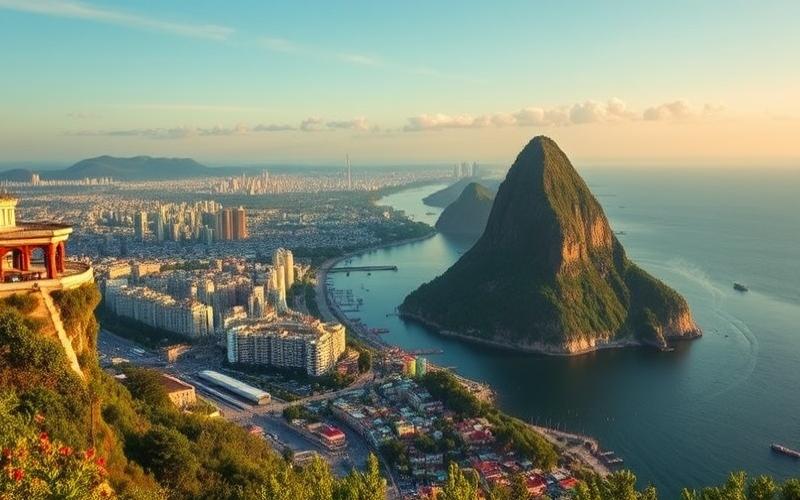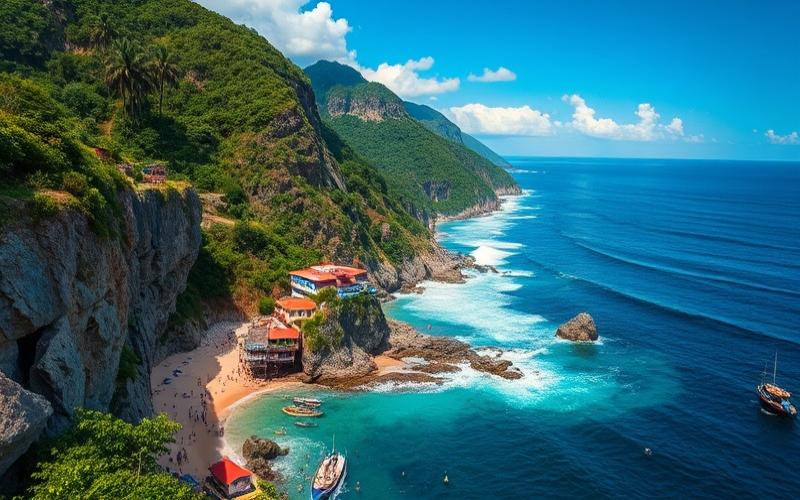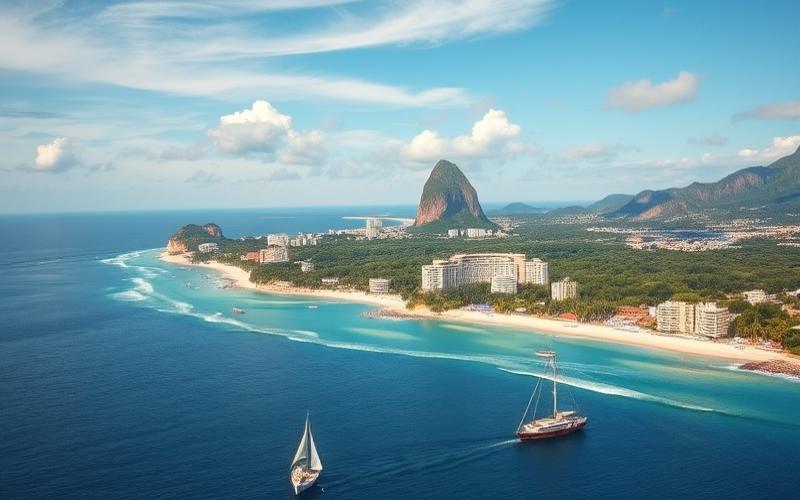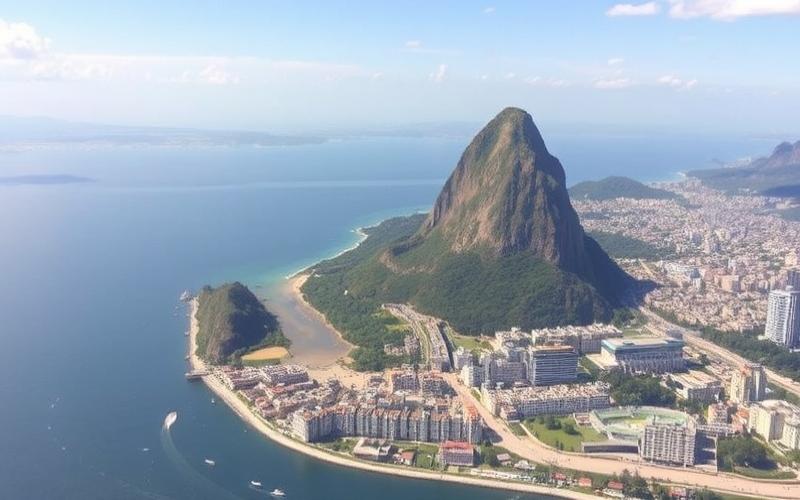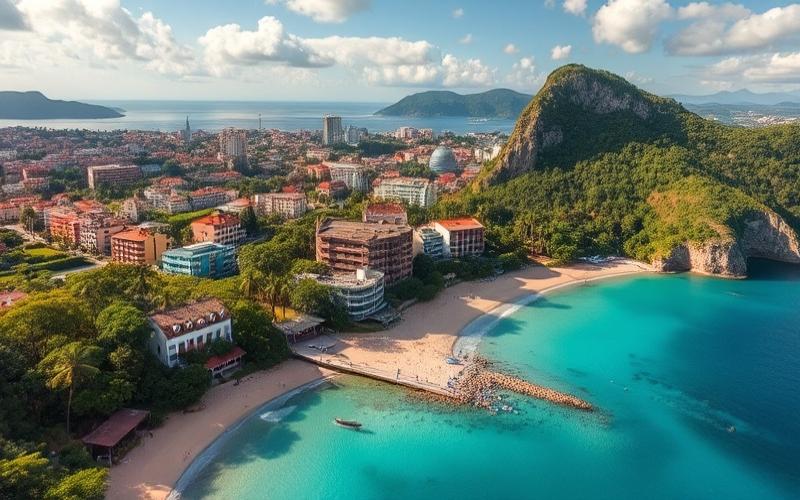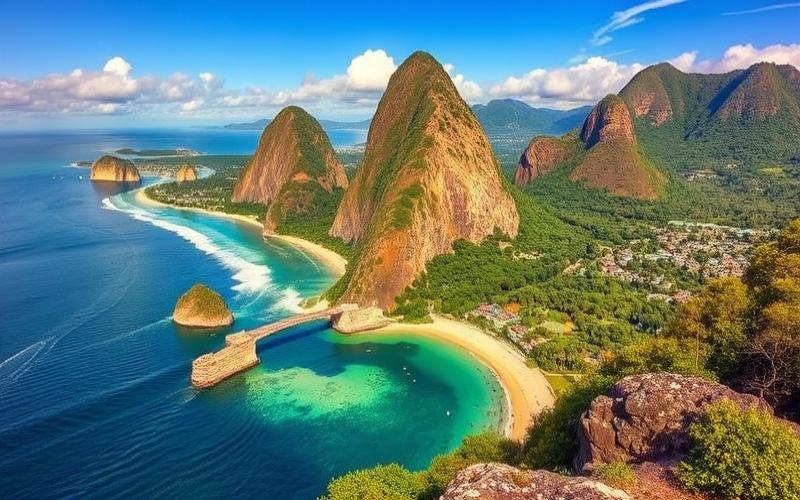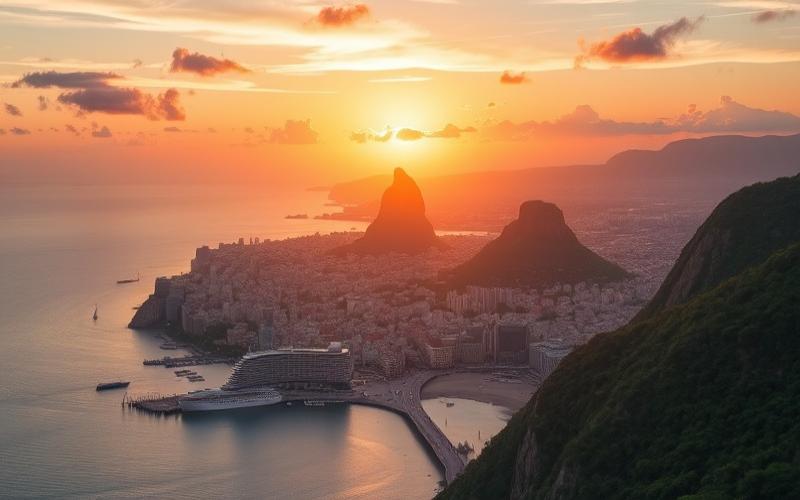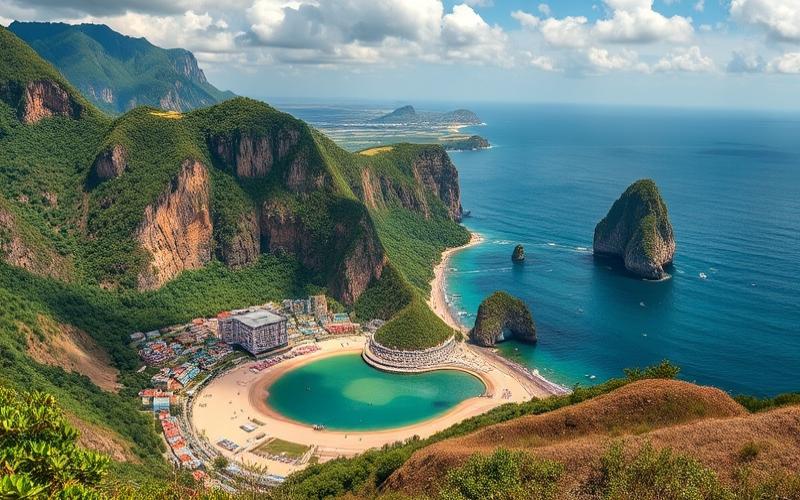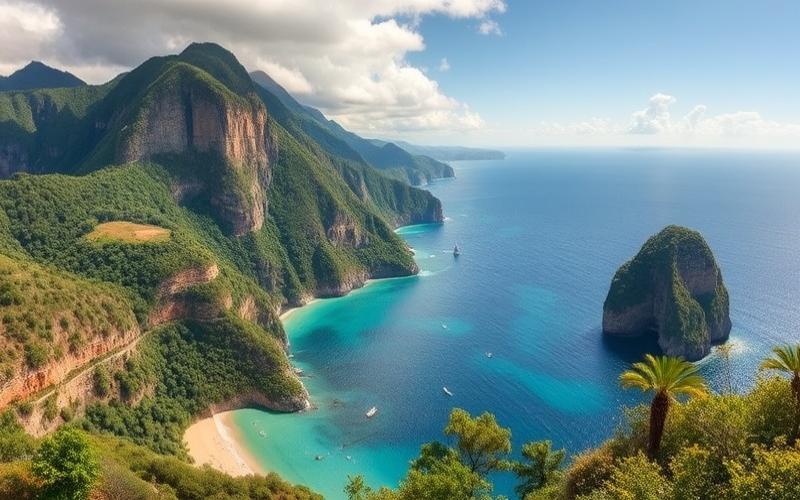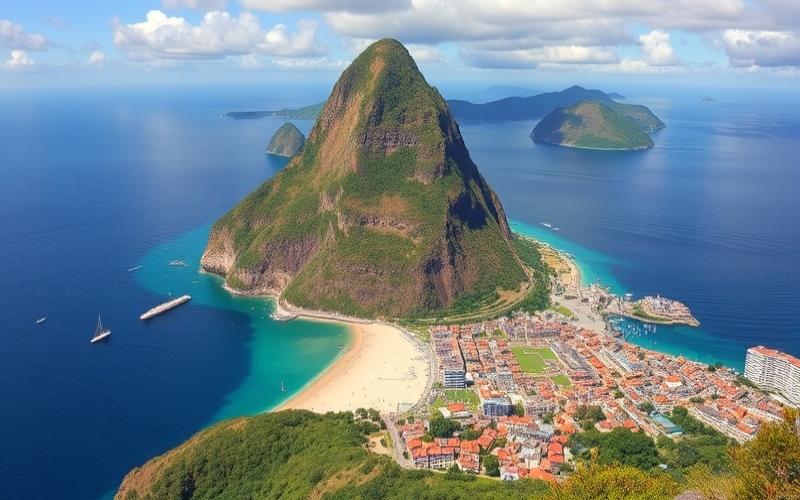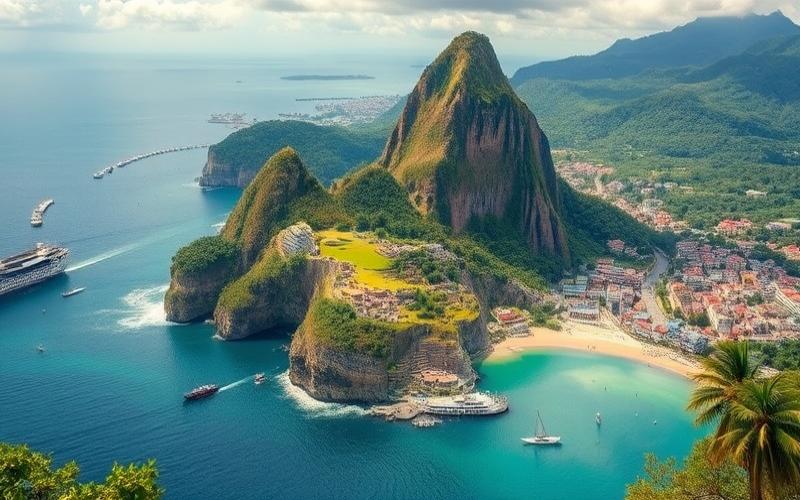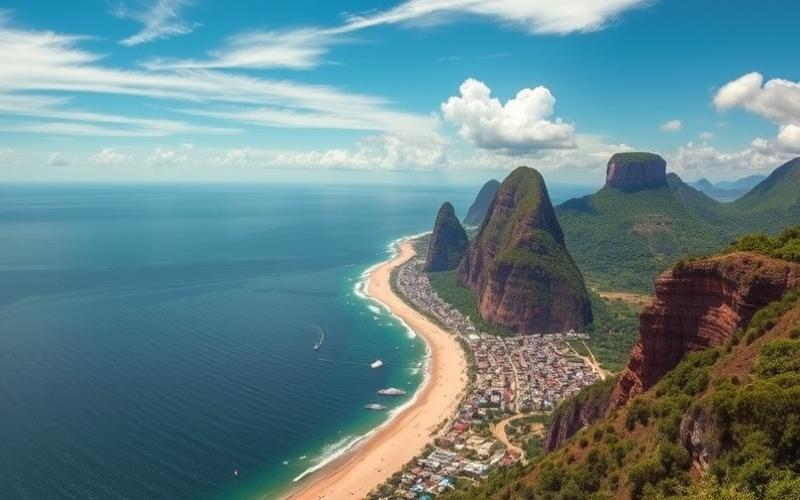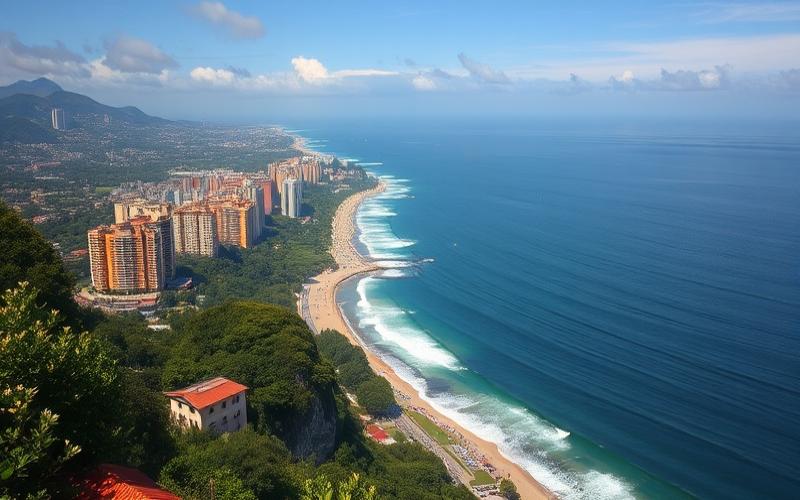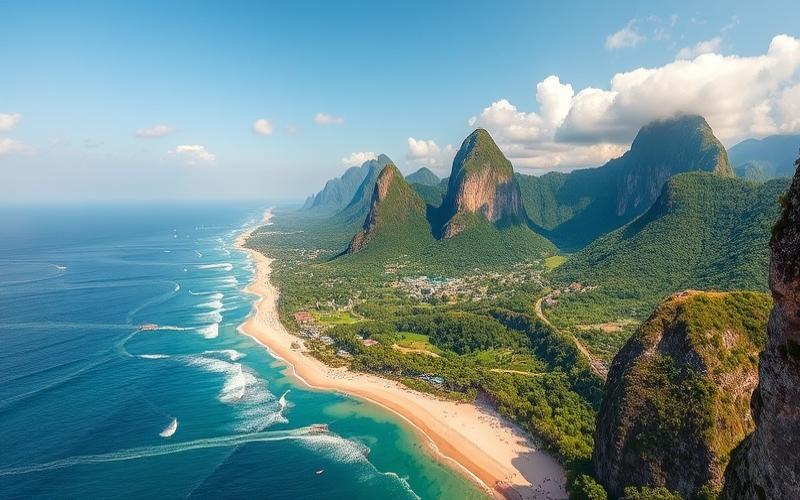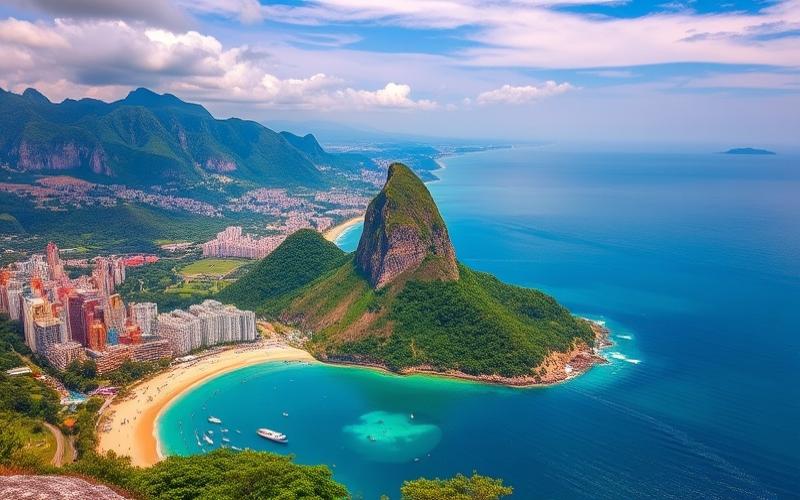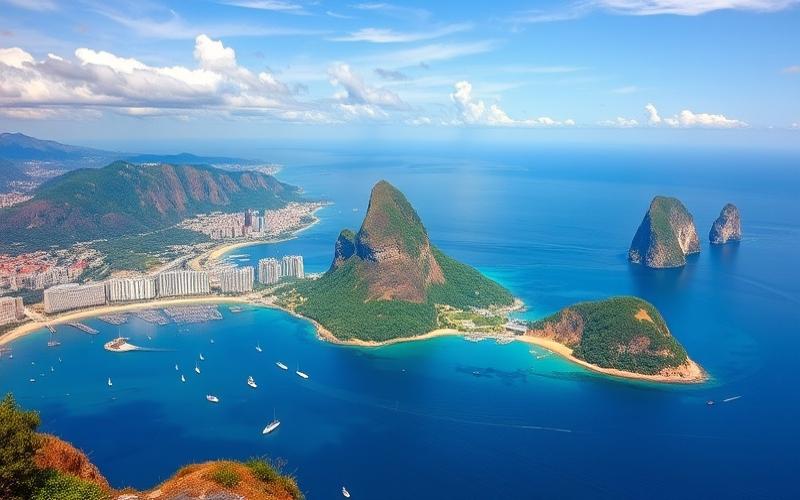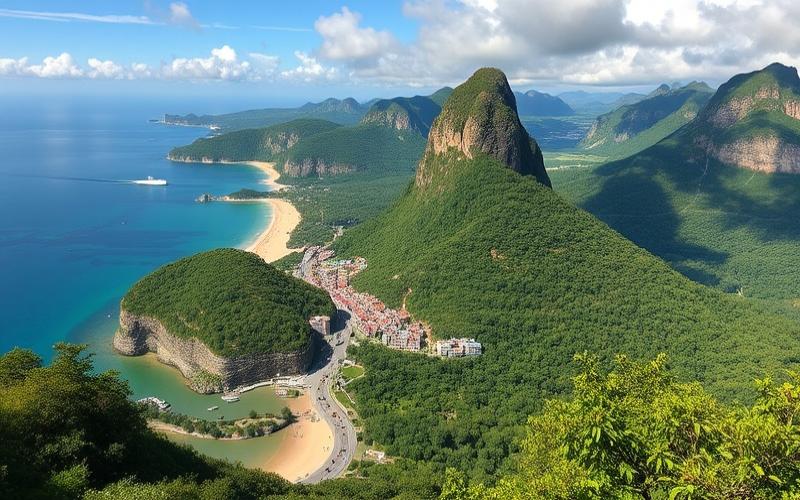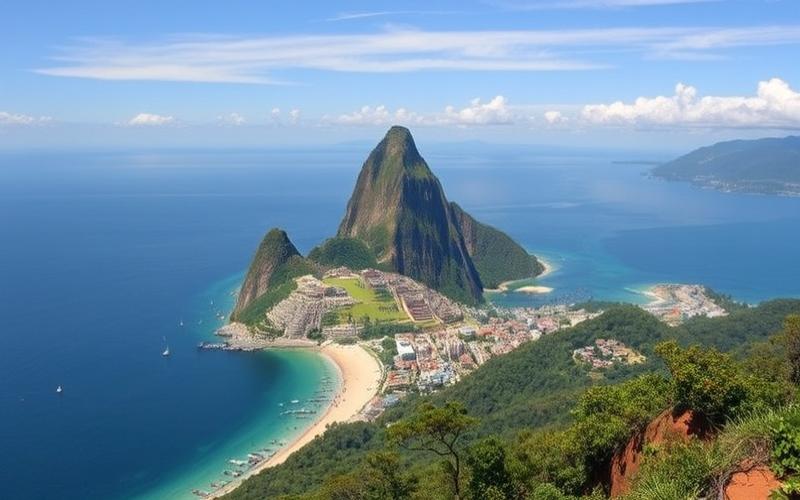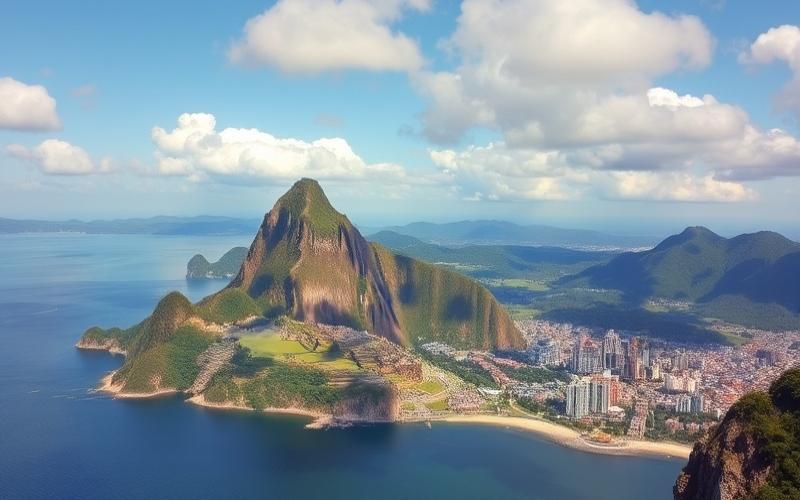
 Published on and written by Cyril Jarnias
Published on and written by Cyril Jarnias
Adapting to the vibrant and diverse climate of Brazil is an adventure in itself, but for expatriates, it means much more than just getting used to tropical heat or rainy seasons.
The country offers geographical richness ranging from the lush tropical forests of the Amazon to the sunny beaches of the Atlantic coast. Each region requires a different approach to handle daily climate challenges, with practical tips ranging from managing intense humidity to optimizing your home for maximum comfort.
Whether you’re drawn to the effervescent energy of Rio de Janeiro or the historic charm of Salvador, navigating this climate diversity requires smart preparation and great adaptability to fully enjoy this Brazilian experience.
Adapting to the Brazilian Climate: Challenges for Expatriates
Brazil presents remarkable climate diversity, with several climate types distributed from north to south of the country. This variety imposes adaptation challenges on expatriates that are sometimes underestimated.
Table of Main Brazilian Climates and Regional Examples
| Climate Type | Main Region | Main Characteristics |
|---|---|---|
| Equatorial (Amazon) | North, Amazon | Constant heat and humidity, abundant rainfall year-round |
| Tropical Savanna (Cerrado) | Center, Cerrado, Brasilia | Alternating dry and wet seasons, high temperatures |
| Humid Subtropical (South) | Southern States, Curitiba | More pronounced winters, hot and humid summers, seasonal variations |
| Semi-Arid | Northeast (Sertão) | Intense heat, low and irregular precipitation |
Main Challenges for Expatriates
- Intense Humidity: In the Amazon, high humidity can cause discomfort, promote excessive sweating, and increase risks of fungal infections or skin conditions.
- High Temperatures: In the Cerrado or Northeast, temperatures can exceed 95°F (35°C) during hot seasons, requiring physical and clothing adaptation.
- Seasonal Variations: In the south, the contrast between summer and winter requires planning for clothing suitable for sometimes cool temperatures, uncommon in other Brazilian regions.
- Heavy Rainfall: During the rainy season, some regions may be prone to flooding or road closures.
Effects on Health, Well-being, and Lifestyle
- Health: Increased risks of dehydration, heatstroke, infections related to humidity or mosquitoes (dengue, zika in tropical areas).
- Well-being: Fatigue related to climate adaptation, sleep disturbances due to heat, difficulties maintaining certain lifestyle routines.
- Lifestyle: Modifying outdoor activity schedules to avoid the hottest hours, adapting eating habits (preferring fruits, light and hydrating dishes).
Practical Adaptation Tips
- Wear light, loose-fitting, light-colored clothing to limit heat absorption.
- Consistently use sun protection (sunscreen, sunglasses, wide-brimmed hats).
- Drink water regularly, even without feeling thirsty, to prevent dehydration.
- Prepare waterproof clothing and appropriate shoes for the rainy season.
- Schedule physical activities during cooler hours (early morning or evening).
- Pay attention to your body’s signals and don’t underestimate heat-related fatigue.
Expatriate Anecdotes and Testimonials
“In Manaus, the heat and humidity were so intense that I had to completely rethink my wardrobe. I learned to prioritize cotton clothing and organize my shopping very early in the morning.”
“Living in Curitiba, I was surprised by the winter chill. Unlike Rio, here a good sweater is essential between June and September.”
“In the Cerrado, the dry season impressed me with the dust and dry air. I got into the habit of humidifying my home and drinking much more water than in Europe.”
Tip from an Expatriate in Brasilia:
“The most important thing is to learn to listen to the locals. They know perfectly how to handle the heat, whether by adapting work schedules or taking advantage of naps to avoid the burning midday sun.”
Adapting to the Brazilian climate requires flexibility, preparation, and a good dose of observing local daily life to preserve your health and well-being.
Good to Know:
The Brazilian climate varies from humid tropical in the Amazon to subtropical in the South, requiring constant hydration and light clothing; expatriate testimonials recommend adopting a flexible lifestyle to manage climate fluctuations.
Preserving Health and Well-being in the Tropical Climate
Optimal Hydration in Tropical Climate
- Drink bottled water regularly or water that has undergone reliable treatment.
- Avoid tap water and unsealed drinks or those containing ice cubes of uncertain origin.
- Prefer spaced hydration throughout the day, especially during physical activity or prolonged heat exposure.
- Prepare drinks enriched with mineral salts if you sweat heavily.
Preventing Mosquito-Borne Diseases
- Apply mosquito repellents to exposed skin and clothing.
- Wear covering, loose-fitting, light-colored clothing, especially in the evening and at night.
- Install impregnated mosquito nets in risk areas.
- Keep doors and windows closed or protected by screens.
- Recommended vaccination against yellow fever depending on regions.
Sun Protection and Heatstroke Prevention
- Use high SPF sunscreen (SPF 30 or higher), reapplied every two hours and after each swim.
- Wear hats, UV-protection sunglasses, and light covering clothing.
- Avoid direct sun exposure between 10 AM and 4 PM.
- Prefer shade, umbrellas, and limit outdoor activity duration during the hottest hours.
- In case of heatstroke symptoms (headache, nausea, hot skin), cool down immediately and hydrate.
| Recommendation | Why? | Practical Tip |
|---|---|---|
| SPF 30+ Sunscreen | Reduce sunburn risk | Apply every 2 hours |
| Hat and Sunglasses | Protect head and eyes | Wide-brim models, UV400 |
| Light Clothing | Limit heat and protect skin | Prefer cotton or linen |
| Regular Hydration | Avoid dehydration | Carry reusable water bottle |
Adapting Your Diet and Preserving Digestive Health
- Enjoy local fruits and vegetables, but ensure they’re washed with drinking water or peeled.
- Avoid raw or undercooked foods, particularly meats, fish, and seafood.
- Be cautious of street food if its freshness or hygiene is questionable.
- Prefer light, low-fat meals, limiting excess sugar and salt.
- Wash hands frequently, especially before meals.
Tips for a Balanced Lifestyle and Adaptation to Climate and Culture
- Maintain moderate physical activity: walks, swimming, yoga, preferring cooler hours of the day.
- Allow yourself rest and recovery moments, especially during the first adaptation days.
- Practice stress management techniques: deep breathing, meditation, social or artistic activities.
- Accept the local rhythm, often more relaxed, and adjust your expectations to avoid unnecessary frustration and stress.
- Create a daily routine including balanced diet, hydration, physical activity, and relaxation moments.
Summary of Key Points to Remember
- Drink water regularly, avoid dehydration.
- Protect yourself from sun and mosquitoes.
- Adopt a healthy and adapted diet.
- Manage stress and respect your adaptation pace.
- Be attentive to hygiene and food safety.
Good to Know:
Hydrate regularly with water and prefer Brazilian foods rich in fiber to promote good digestion in the humid tropical climate; remember to apply adequate sunscreen and wear light clothing to prevent heatstroke and sunstroke. Use mosquito repellents and install mosquito nets to protect against vector-borne diseases, and incorporate relaxation moments into your daily routine to better manage stress in this new environment.
Equipment and Specific Arrangements for the Brazilian Climate
Clothing Adapted to Different Climate Regions
- Tropical Regions (Northeast, Amazon, Rio de Janeiro, Coast):
- Prefer light, loose, breathable clothing (cotton, linen) to withstand heat and high humidity.
- Shorts, bermudas, t-shirts, short-sleeve shirts, and light dresses.
- Prepare a raincoat or light poncho for frequent showers, especially during rainy season.
- Hats, caps, and sunglasses to protect from intense sun.
- Sandals and open shoes recommended for more comfort.
- Southern Brazil and Highland Regions (Australian winter, June to September):
- Add a sweater or light jacket for cooler evenings (temperatures can drop to 50-59°F/10-15°C).
- Prepare warm clothing if staying in the South during Brazilian winter.
| Region | Recommended Clothing | Rainy Season | Precautions |
|---|---|---|---|
| North/Equator | T-shirt, shorts, breathable clothing | Jan.-June | Raincoat |
| South (Rio, Iguaçu) | Light sweater, jacket, pants | Oct.-March | Windbreaker |
| Amazon/Pantanal | Long-sleeve shirt, light pants | Jan.-June | Mosquito repellent, raincoat |
| Coast (Salvador, Recife) | Dress, colorful clothing, sandals | March-July | Hat, sunglasses |
Essential Equipment for Intense Heat
- Fans: essential in most homes to circulate air and improve thermal comfort.
- Air conditioning systems: very common in urban areas and high-heat regions (Rio, São Paulo, Manaus), especially in bedrooms and main living spaces.
- Misters and humidifiers: useful to relieve heat sensation and dry air during dry season.
Construction Materials Promoting Natural Ventilation
- Terracotta tile roofs: dissipate heat and protect against heavy rains.
- Adobe or brick walls: materials with high thermal inertia, keeping interior coolness.
- Opening width: large louvered windows, adjustable shutters and blinds to promote air circulation.
- Verandas and varandas: covered spaces open to the exterior, characteristic of traditional Brazilian houses.
Gardening Techniques Adapted to Tropical Climate
- Use of local plants (palm trees, banana trees, bougainvillea) that tolerate humidity and heat.
- Mulching to conserve soil moisture and limit evaporation.
- Rainwater harvesting systems for irrigation during dry season.
- Creating natural shade with dense foliage trees or vegetated pergolas.
Solutions Against Torrential Rains
- Sloped roofs to facilitate rapid water drainage.
- Wide gutters and drains to prevent flooding.
- Building elevation (stilts or foundation) in flood-prone areas.
- Waterproof exterior coatings to protect walls.
Maintenance and Seasonal Adaptation Practices
- Regularly clean ventilation systems (fans, air conditioning filters) to prevent clogging and optimize efficiency.
- Check roof and gutter sealing before rainy season.
- Change bed linens according to season: prefer light cotton sheets in summer, add a light blanket in winter in the south.
- Ventilate rooms early morning and late evening to renew air without accumulating heat.
- Install mosquito screens on windows and doors to protect against insects during humid season.
To Remember: To maximize comfort in a Brazilian home, it’s essential to prefer clothing adapted to the region, invest in effective ventilation equipment, choose materials and arrangements promoting natural air circulation, adopt reasoned tropical gardening, and regularly maintain installations to adapt to seasonal variations and intense rain episodes.
Good to Know:
Prefer light, breathable cotton clothing for the humid north, and adopt drip irrigation technique for garden maintenance in tropical climate. Install air conditioning systems and fans, while choosing ventilated clay bricks to promote optimal thermal comfort, and use awnings or pergolas to protect against torrential rains.
Adaptive Strategies to Handle Extreme Climates
Expatriates living in Brazil must deal with marked regional climate variations, which directly influence their habits and adaptation strategies.
| Region | Climate Characteristics | Main Challenges for Expatriates |
|---|---|---|
| Amazon | Intense heat, high humidity | High temperatures, mosquitoes, abundant rainfall |
| Northeast | Heat, frequent drought | Water shortage, heat management, prolonged drought risks |
| South/Southeast | Temperate climate, seasonal rains | Thermal variation, seasonal flooding |
| Central-West | Alternating dry/wet season | Heat, marked seasonal variations |
Practical Adaptation Methods
- Use of adapted construction materials:
- Thick adobe or raw earth walls in hot and dry regions to limit interior heat.
- Tile roofs, natural ventilation, sunshades and shutters to reduce heat impact and promote air circulation.
- Thermal insulation in regions with strong temperature variations.
- Heat management:
- Wear light and breathable clothing in cotton or linen.
- Prefer light colors to limit heat absorption.
- Adapt your lifestyle rhythm: avoid physical activities during the hottest hours.
- Hydration:
- Drink water regularly, even without thirst sensation.
- Consume local water-rich fruits (watermelon, mango, papaya).
- Prevention against torrential rains and floods:
- Elevate homes or choose housing in non-floodable zones.
- Plan drainage systems around houses.
- Stay informed about local alerts (municipal alert systems, weather apps).
- Keep emergency kits available (flashlight, water reserves, important documents).
Expatriate Testimonials
“When I moved to Recife, I quickly understood the importance of natural ventilation. I chose a cross-ventilation apartment, which allows constant air circulation and makes the heat much more bearable.”
“In Manaus, humidity management is essential. I invested in a dehumidifier and prefer materials resistant to mold. Technical clothing has become indispensable.”
Local Resources for Support and Advice
- Expatriate groups: French-speaking associations, Facebook groups, events organized in major cities to exchange tips and practical recommendations.
- Official platforms: Tools like AdaptaBrasil to learn about local climate risks and anticipate extreme events.
- Municipal networks: Flood or drought alert services, available via prefecture websites or local mobile apps.
- Courses and workshops: Offered by some NGOs or universities to learn how to adapt to tropical climate (water management, ecological construction, etc.).
Important
Adaptation also involves learning Portuguese, knowing local laws, and integrating into support networks. Expatriates who successfully adapt recommend staying informed, participating in community initiatives, and seeking advice from residents.
Good to Know:
To handle extreme climates in Brazil, prefer adapted construction materials to regulate interior temperature and adopt breathable clothing; consider consulting local resources like the Amigos da Terra NGO in Curitiba for practical advice.
Disclaimer: The information provided on this website is for informational purposes only and does not constitute financial, legal, or professional advice. We encourage you to consult qualified experts before making any investment, real estate, or expatriation decisions. Although we strive to maintain up-to-date and accurate information, we do not guarantee the completeness, accuracy, or timeliness of the proposed content. As investment and expatriation involve risks, we disclaim any liability for potential losses or damages arising from the use of this site. Your use of this site confirms your acceptance of these terms and your understanding of the associated risks.

